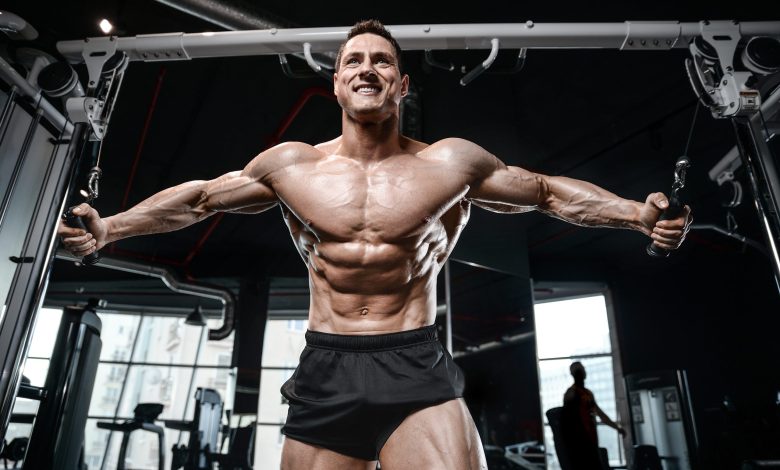The Essential Guide to Building a Strong and Sculpted Chest

A strong and well-defined chest is a key component of a balanced and aesthetic physique. Chest workouts not only enhance the upper body’s strength but also help to improve posture and athletic performance. Whether you’re a beginner or an experienced lifter, this guide will provide you with effective exercises and tips to develop a powerful and sculpted chest.
Understanding the Chest Muscles
Before diving into chest exercises, it’s important to understand the anatomy of the chest muscles. The main muscle groups in the chest are:
- Pectoralis Major: This large muscle covers most of the chest and consists of:
- Clavicular Head (Upper Chest): Positioned near the collarbone.
- Sternal Head (Lower Chest): Located closer to the sternum.
- Pectoralis Minor: A smaller muscle beneath the pectoralis major, which helps stabilize the shoulder blades and support overall shoulder function.
Targeting both the upper and lower chest is essential for achieving a well-rounded and proportionate chest development.
Benefits of Chest Workouts
There are numerous benefits to regularly incorporating chest exercises into your workout routine:
- Strength Development: Building chest muscles enhances upper body pushing strength, which is crucial for compound lifts like the bench press and overhead press.
- Muscle Definition: Chest workouts contribute to greater muscle definition, helping you achieve a more sculpted and aesthetically pleasing physique.
- Improved Posture: Strengthening the chest muscles can help pull the shoulders back and support good posture, especially when combined with back exercises.
- Enhanced Sports Performance: A strong chest supports athletic performance, particularly in sports requiring upper body strength such as football, swimming, and boxing.
Top Chest Exercises to Include in Your Routine
A successful chest workout should include a mix of compound and isolation exercises. Below are some of the most effective chest exercises for building strength and size:
Flat Bench Press (Barbell or Dumbbell)
The flat bench press is one of the best chest exercises for overall chest development. It targets the lower chest while also working the shoulders and triceps.
- How to perform it: Lie on a flat bench, with your feet planted firmly on the ground. Grip the barbell or dumbbells and lower them to your chest. Press the weights back up, focusing on engaging the chest muscles throughout the movement.
Incline Bench Press
Incline bench presses focus on the upper chest, helping to add fullness and definition to this area.
- How to perform it: Set the bench at a 30-45 degree angle. Lower the barbell or dumbbells toward the upper part of your chest, and then press them back up, focusing on squeezing the upper pectorals.
Decline Bench Press
Decline presses specifically target the lower chest, helping to create more well-rounded chest development.
- How to perform it: Lie on a decline bench with a barbell or dumbbells. Lower the weight toward your lower chest and press it back up. This variation works well for developing the lower portion of the pectorals.
Push-ups
Push-ups are one of the best bodyweight exercises to build chest strength and endurance. They also work the shoulders and triceps.
- How to perform it: Place your hands slightly wider than shoulder-width apart and lower your body toward the floor. Push yourself back up, maintaining a straight line from your head to your heels. Modify the exercise by adjusting the angle (incline, decline) for variety.
Chest Flyes (Dumbbells or Cables)
Chest flyes are isolation exercises that target the chest by stretching and contracting the pectorals, contributing to muscle definition and size.
- How to perform it: Lie on a flat or inclined bench, holding dumbbells or cables. With a slight bend in your elbows, open your arms wide, then bring them together in front of your chest. Focus on squeezing the chest at the peak of the movement.
Cable Chest Flyes
Cable flyes are a great alternative to dumbbell flyes, providing continuous tension on the chest throughout the entire range of motion.
- How to perform it: Set the cables at chest height. Grab the handles, lean slightly forward, and pull the cables together in front of your chest, focusing on squeezing the pectorals at the top of the movement.
Key Tips for Effective Chest Workouts
To maximize the results from your chest training, follow these essential tips:
Prioritize Progressive Overload
To build muscle, you need to progressively challenge your chest. Gradually increase the weight, repetitions, or intensity over time to ensure your muscles continue to grow and adapt.
Maintain Proper Form
Always focus on proper technique, as lifting with improper form can lead to injury and ineffective results. Ensure that you control the movement and maintain good posture during each exercise.
Vary Your Exercises
To avoid plateaus, change up your routine regularly by incorporating different exercises and angles. Use a combination of barbell and dumbbell presses, as well as incline and decline variations, to fully target your chest muscles.
Allow for Sufficient Recovery
Your chest muscles need time to recover between workouts. Avoid training the chest on consecutive days, and give yourself at least 48 hours of rest to allow the muscles to repair and grow.
Fuel Your Body with Proper Nutrition
Nutrition plays a vital role in muscle recovery and growth. Make sure to consume adequate protein, healthy fats, and carbohydrates to support your chest workouts and aid in muscle repair.
Conclusion
Chest workouts are a vital component of a well-rounded fitness routine. By including effective exercises such as the bench press, push-ups, and chest flyes, and following tips for progressive overload, proper form, and recovery, you can build a strong and defined chest. With consistent training, adequate nutrition, and rest, you’ll see significant improvements in strength, muscle definition, and overall athletic performance.









